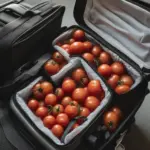Picture this: You’re strolling down the Champs-Élysées, the Eiffel Tower shimmering in the distance, about to meet friends for a chic Parisian dinner. You reach for your favorite button-down shirt, only to find it crumpled and creased from your journey. Disaster!
Packing for a trip shouldn’t feel like a game of Tetris, and achieving that crisp, polished look on the go is easier than you think. Whether you’re a seasoned jet-setter or planning your first getaway, this guide will equip you with foolproof techniques to pack button-down shirts for travel, ensuring you always look your best, no matter the destination.
Mastering the Fold: Techniques for a Wrinkle-Free Trip
Wrinkles happen when fabric is compressed and left in one position for too long. The key is to pack strategically, minimizing pressure points and maximizing space. Here’s how:
1. The Classic Fold
- Step 1: Button your shirt all the way up. Lay it face down on a flat surface.
- Step 2: Fold each side of the shirt inwards towards the center, aligning the sleeves with the folded edges.
- Step 3: Fold the shirt in half lengthwise, bringing the bottom hem up to the collar.
- Step 4: Smooth out any wrinkles and pack the shirt neatly in your suitcase.
2. The Rolling Method
- Step 1: Button your shirt and lay it face down. Fold one side of the shirt inwards and lay one sleeve flat.
- Step 2: Fold the sleeve back onto the shirt, creating a straight line. Repeat on the other side.
- Step 3: Starting from the bottom, tightly roll the shirt upwards, keeping it taut as you go.
- Step 4: Place the rolled shirt in your suitcase, securing it with packing cubes or clothing items to prevent unrolling.
3. The Bundle Wrap Technique
This technique is ideal for multiple shirts and minimizes wrinkles through strategic layering.
- Step 1: Lay a pair of pants or a jacket flat on a surface.
- Step 2: Place a folded shirt (using the classic fold) on top.
- Step 3: Continue layering clothes, alternating shirts and pants/jackets.
- Step 4: Once you have a stack, begin wrapping the bottom layer around the rest, creating a secure bundle.

